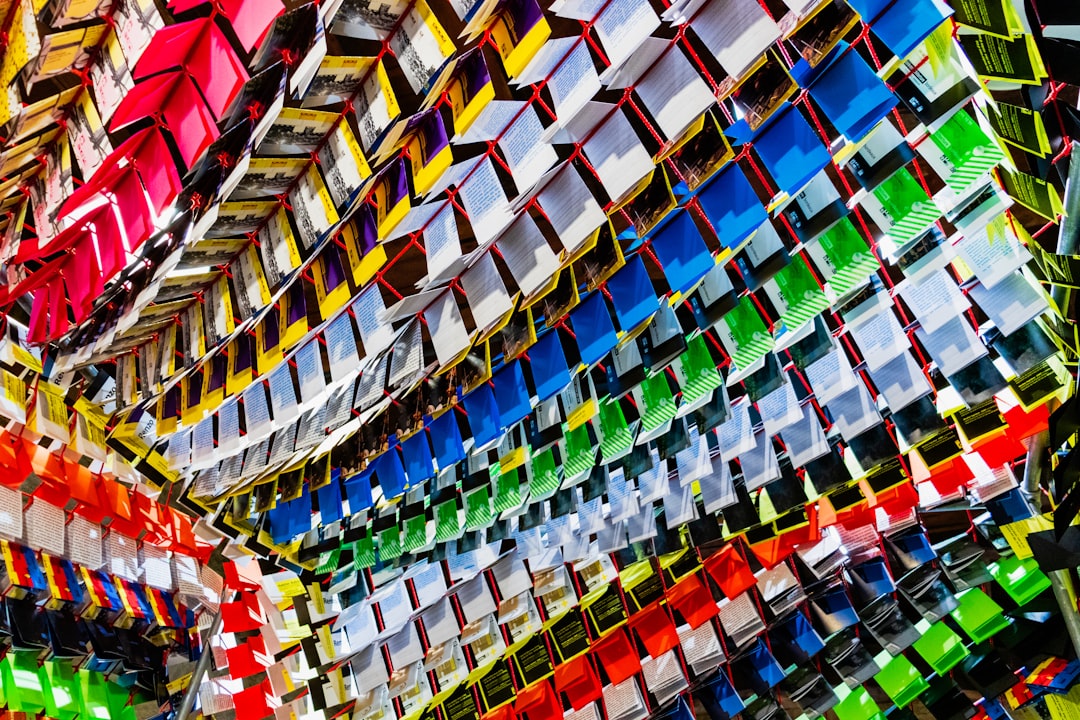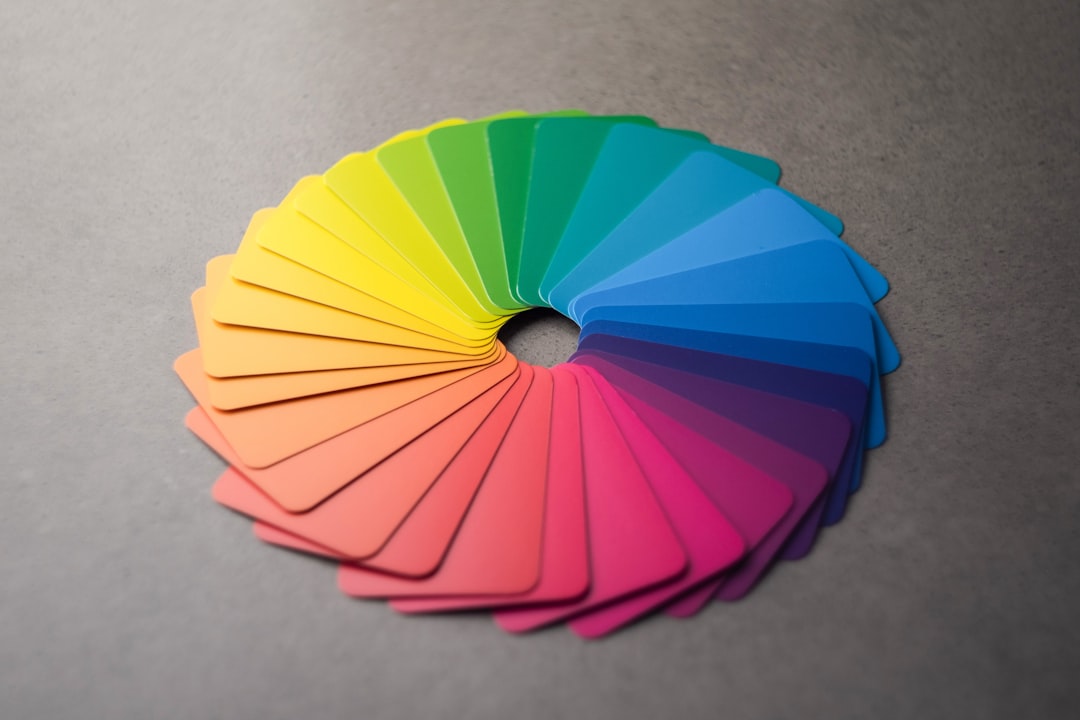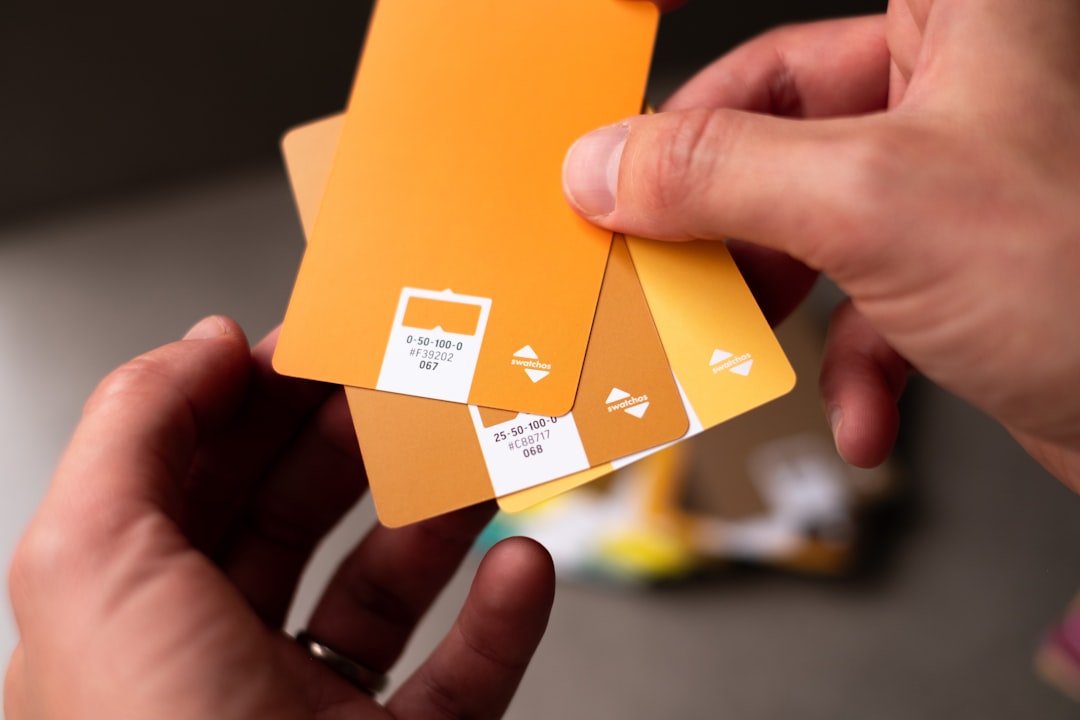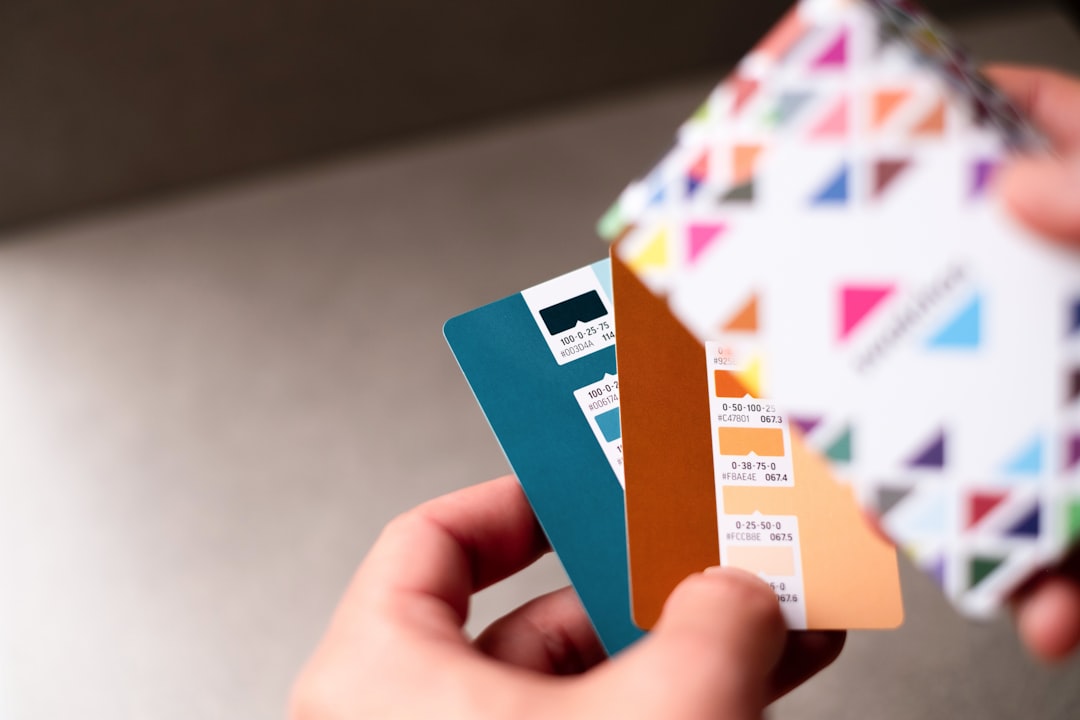
Supercharge your lead generation with a FREE Google Ads audit - no strings attached! See how you can generate more and higher quality leads
Get My Free Google Ads AuditFree consultation

No commitment
Supercharge your lead generation with a FREE LinkedIn Ads audit - no strings attached! See how you can generate more and higher quality leads
Get My Free Google Ads AuditFree consultation

No commitment
Supercharge your lead generation with a FREE Meta Ads audit - no strings attached! See how you can generate more and higher quality leads
Get My Free Google Ads AuditGet My Free LinkedIn Ads AuditGet My Free Meta Ads AuditFree consultation

No commitment
Supercharge your lead generation with a FREE Google Ads audit - no strings attached! See how you can generate more and higher quality leads
Get My Free Google Ads AuditFree consultation

No commitment
In the rapidly evolving digital marketing landscape, Google Ads for Color Card Manufacturers is emerging as a pivotal factor in achieving B2B growth. By harnessing Google Ads, color card manufacturers can seamlessly connect with high-intent prospects searching for specialized solutions, effectively bridging the gap between online and offline channels. This approach enhances brand visibility and supports ongoing sales efforts by targeting decision-makers precisely when they're ready to engage.

Color card manufacturers operate in an industry where timing, precision, and buyer intent dictate every successful lead. Decision-makers in paint, coatings, and design sectors expect seamless access to color references and demand a digital buying journey that matches the technical accuracy of the products themselves. Manufacturers can further support their customers by offering physical color cards for accurate color selection, ensuring that design and procurement professionals have reliable tools throughout the purchase process.
Effective lead generation for this sector blends data-driven paid search with advanced audience targeting and strategic landing page optimization. Revenue teams that unify campaign insights see a direct lift in high-value lead flow, as every click and impression is mapped to in-market demand signals and integrated with sales processes. For practical strategies, explore actionable playbooks for demand generation and optimize your campaigns for measurable results.
Using these structured practices, color card manufacturers can build a demand generation engine that adapts to both industry complexity and the evolving needs of their most valuable buyers. Each tactic—rooted in data and aligned to revenue—delivers compounding improvements in cost efficiency, lead quality, and overall Google Ads ROI for manufacturers. Ready to elevate your lead generation? Get started for free with Sona.

Color card manufacturers operate in a highly visual, specification-driven market where timing and precision directly impact new business wins. Digital advertising must address unique industry requirements: engaging professionals who expect accuracy, fast sample delivery, and tailored solutions for sectors like paint, coatings, and design. Manufacturers looking to showcase physical color cards for accurate color selection can benefit from exploring colour cards for printing and manufacturing.
Google Ads empowers color card manufacturers to pinpoint procurement officers and industry decision-makers exactly when they are searching for color matching, swatch books, or bulk sample solutions. Audience targeting can be refined to surface ads for those actively evaluating suppliers, ensuring marketing spend is directed toward high-value buyers at the moment of intent.
Manufacturers unlock new project opportunities by running campaigns that highlight their high-margin, specialty services. Responsive segmentation enables businesses to shift creative and bidding strategies as new market segments or emerging trends are identified, such as eco-friendly materials or digital integration. For practical guidance on these tactics, see our demand generation playbooks.
The ability to react to fluctuating demand is vital in this sector, especially during seasonal repaints, product launches, or architectural trend cycles. Real-time insights from Sona allow manufacturers to rapidly adjust budgets or creative, capturing surging inquiries before competitors can respond.
As color standards and consumer preferences evolve, manufacturers can leverage location-based targeting to increase visibility within growing urban regions or emerging markets. Data-driven segmentation ensures ads reach designers, specifiers, and distributors where product demand is accelerating. Explore marketing analytics guides for more strategies on optimizing reach and segmentation.
Critical to long-term growth is the integration of Google Ads conversion data with broader marketing and sales systems. When CRM and ad platform data are unified, revenue teams gain a holistic view of which campaigns generate qualified leads and actual sales, not just clicks—enabling smarter investment and more accurate ROI measurement for every color card campaign. For a seamless start, get started for free with Sona and connect your marketing data for actionable insights.

Ready to activate high-performing campaigns and drive measurable results? Get started for free with Sona.

Ambitious color card manufacturers consistently outperform by identifying fresh routes to growth beyond routine digital channels. Leading teams deploy a mix of industry intelligence, advanced segmentation, and data-driven targeting to capture new demand and outmaneuver competitors in highly specialized markets.
Ready to uncover new growth opportunities for your color card manufacturing business? Get started for free with Sona.

Audience segmentation is a powerful lever for color card manufacturers aiming to maximize the impact of their Google Ads spend. Precise segmentation uncovers high-value opportunities in both the B2B and B2C space, letting marketing teams adjust campaigns and creative to match the needs of each distinct segment. By targeting the most relevant industries and buyer profiles, color card businesses can drive higher engagement rates, increase conversion efficiency, and improve Google Ads ROI.

| Industry | Keyword | Monthly Search Volume | Competition Level | Low Bid | High Bid |
| Color Card Manufacturers | color card manufacturers | 10 | LOW |
Color card manufacturers operate in a space where search intent is highly specialized and buyer journeys are complex. Identifying and activating the right keywords is critical for attracting B2B decision-makers and procurement professionals who are actively evaluating suppliers or looking for tailored solutions. For manufacturers seeking to showcase their products, using physical color cards for accurate selection supports both printing and manufacturing use cases.
A robust keyword strategy anchors every high-performing Google Ads for color card manufacturers campaign. By focusing on mid- and bottom-funnel terms, such as "custom color card printing," "bulk color card samples," and "Pantone color reference cards," advertisers can target prospects with clear purchase intent. Including industry-specific modifiers like "architectural color samples," "paint manufacturer swatch cards," or "industrial color standards" ensures campaigns speak directly to the nuanced needs of commercial buyers. Leveraging long-tail search queries, such as "eco-friendly color card suppliers" and "digital color matching cards for manufacturers," further improves relevance and conversion rates while reducing wasted spend.
Precision targeting is essential as color card purchasing cycles often involve multiple stakeholders and technical requirements. Using detailed negative keyword lists prevents wasted impressions on low-value or irrelevant queries, such as "free color cards" or "home DIY color swatches." Marketers can maximize efficiency by segmenting keyword groups according to audience, product type, and buying stage, such as separating campaigns for design professionals, procurement managers, or direct retail consumers. Advanced platforms allow teams to go beyond simple keyword matching by identifying the companies and people visiting your website, enabling B2B marketers to refine their audience lists in real time based on intent signals and account engagement.
As prospects interact with ads and landing pages, dynamic audience updates ensure that remarketing campaigns and lookalike segments remain aligned with current buying intent. This enables color card manufacturers to nurture high-value leads with tailored messaging as they progress through the evaluation process. Integrating CRM and enriched lead data directly into ad platforms closes the loop, ensuring that every keyword investment is mapped to actual sales outcomes and pipeline velocity, not just clicks and impressions. This unified approach to keyword strategy and audience targeting delivers measurable ROI and a competitive edge in digital marketing for manufacturers. To see how this approach can work for your business, get started for free with Sona.
An effective Google Ads strategy for color card manufacturers requires precision at each step, from initial targeting to ongoing optimization. By leveraging advanced data integrations and real-time insights, manufacturers can achieve stronger relevance, higher conversion rates, and measurable ROI from digital campaigns.
Integration with CRM and data platforms ensures every campaign is rooted in actionable intelligence, not guesswork. This framework outlines each critical phase for maximizing results in online advertising for color card businesses.
Color card manufacturers should prioritize keywords that directly reflect buyer intent and industry applications. Begin with high-value terms such as “custom color card printing,” “paint swatch manufacturer,” and “bulk color reference cards.” Expand to include long-tail variations that capture niche demand, like “eco-friendly color cards for architects” or “automotive touch-up swatch cards.” This approach improves cost efficiency, as ads are only shown to searchers with a high likelihood of converting.
Enrich keyword selection by analyzing CRM and website behavioral data to identify search patterns of previous high-value customers. For reference on physical color cards, explore colour cards for accurate selection. This ensures that Google Ads for Color Card Manufacturers are hyper-relevant and aligned with the real language of their target audience, supporting stronger pipeline generation.
The ad copy must directly address pain points and aspirations unique to color card buyers. For B2B segments, highlight challenges like achieving color accuracy at scale, fast turnarounds, or meeting compliance standards. For B2C, focus on inspiring creativity, offering sample kits, or promoting limited-edition color palettes. Each headline and description should use action-oriented language and reference specific solutions, such as “Precision-matched color cards for industrial coatings” or “Order custom fan decks in 24 hours.”
By leveraging enriched CRM data, marketers can dynamically tailor messaging based on a lead’s industry, past engagement, or position in the buying journey. This enables delivery of highly personalized ads that resonate with both first-time visitors and returning decision-makers, increasing click-through and conversion rates. Continuous A/B testing of copy variants, guided by real-time audience insights, ensures campaigns evolve to reflect changing buyer motivations.
Landing pages for color card advertising must deliver a seamless experience that matches the promise of the ad. Align layouts and messaging with the specific keyword and ad group, ensuring that visitors immediately see relevant product options, technical specifications, and clear calls-to-action. Incorporate high-resolution swatch imagery, easy sample request forms, and trust signals like ISO certifications or case studies.
Leverage real-time visitor identification tools to dynamically adapt landing page content based on company, industry, or prior interactions. For example, returning prospects can be shown volume pricing or quick reorder options, while new leads receive educational resources or a sample kit offer. By syncing visitor behaviors back to the CRM, sales teams can prioritize follow-up with the most engaged accounts, creating a tighter feedback loop between marketing and sales activities.
Ongoing optimization is essential for Google Ads ROI for manufacturers. Monitor campaign performance using granular metrics: keyword-level conversions, cost-per-lead, and audience engagement by segment. Apply budget shifts toward ad groups and keywords that drive the highest-quality leads, while pausing or refining underperformers.
Integrate advanced conversion tracking to capture both online actions (form fills, sample requests) and offline events (phone orders, distributor sales), ensuring a complete view of advertising impact. For real-world examples of data-driven improvements in this space, review this paint manufacturer ad performance case study. Real-time intent signals from website and CRM data allow marketers to dynamically adjust bidding, creative, and audience targeting to focus spend on accounts showing active purchase interest. As audiences move through the funnel, sync enriched segments into Google Ads for precise retargeting and lookalike expansion, maintaining alignment between marketing investments and business outcomes.
Each step in this framework creates a foundation for best practices for Google Ads in the color card industry, supporting scalable growth and efficient demand generation. By unifying advertising efforts with CRM and analytics systems, manufacturers can continuously refine campaigns, convert high-intent traffic, and maximize the measurable value of every marketing dollar. To experience these strategies firsthand, get started for free with Sona.
Expanding your digital footprint within the color card space requires more than standard pay-per-click tactics. To achieve lasting growth and higher ROI, align each Google Ads initiative with a broader strategy that prioritizes education, personalization, partnership, and regional relevance. Explore our B2B marketing guides to refine your overall approach.
Implementing these strategies ensures Google Ads for color card manufacturers delivers sustained, scalable growth, while enabling B2B teams to capture higher-value leads, nurture long-term relationships, and accurately measure the ROI of every campaign. Ready to see results? Get started for free with Sona.
In conclusion, leveraging Google Ads effectively can significantly enhance the visibility and market reach of color card manufacturers. By tailoring your advertising strategies to meet industry-specific needs, you can attract a more targeted audience and drive meaningful sales growth.
Throughout this article, we explored the unique challenges facing your industry, such as standing out in a competitive market and efficiently reaching potential customers. We discussed targeted keyword selection, ad scheduling, and budget allocation as key tactics to optimize your Google Ads campaigns and achieve better ROI.
Imagine transforming your advertising efforts into a powerful engine that not only increases your brand's visibility but also converts interest into sales. With the right approach and tools, your ads can become a catalyst for business growth, opening new avenues in the color card manufacturing landscape. Start for free to experience our platform and its capabilities, and discover the difference a data-driven approach can make in your marketing strategy today.
The best strategies include data-driven paid search tactics, effective keyword and audience targeting, landing page alignment, and cross-channel integration to maximize lead quality and ensure precise targeting of high-intent prospects.
Manufacturers can effectively use Google Ads by developing targeted keyword lists, compelling ad copy, and designing effective landing pages, while integrating data-driven optimization and CRM systems for accurate ROI measurement.
Budget allocation should be dynamic and data-driven, focusing on ad groups and keywords that generate the most qualified opportunities, with adjustments based on real-time performance and audience engagement metrics.
Manufacturers should target industry-specific and high-intent keywords such as 'custom color card printing,' 'paint swatch supplier,' and 'bulk color reference order,' along with long-tail variations that capture niche demand.
Success can be measured by integrating conversion data with CRM systems to track and attribute every conversion accurately, using advanced conversion tracking to capture both online and offline sales activities.
Join results-focused teams combining Sona Platform automation with advanced Google Ads strategies to scale lead generation

Connect your existing CRM

Free Account Enrichment

No setup fees
No commitment required

Free consultation

Get a custom Google Ads roadmap for your business
Join results-focused teams combining Sona Platform automation with advanced Meta Ads strategies to scale lead generation

Connect your existing CRM

Free Account Enrichment

No setup fees
No commitment required

Free consultation

Get a custom Google Ads roadmap for your business
Join results-focused teams combining Sona Platform automation with advanced LinkedIn Ads strategies to scale lead generation

Connect your existing CRM

Free Account Enrichment

No setup fees
No commitment required

Free consultation

Get a custom Google Ads roadmap for your business
Join results-focused teams using Sona Platform automation to activate unified sales and marketing data, maximize ROI on marketing investments, and drive measurable growth

Connect your existing CRM

Free Account Enrichment

No setup fees
No commitment required

Free consultation

Get a custom Google Ads roadmap for your business
Over 500+ auto detailing businesses trust our platform to grow their revenue
Join results-focused teams using Sona Platform automation to activate unified sales and marketing data, maximize ROI on marketing investments, and drive measurable growth

Connect your existing CRM

Free Account Enrichment

No setup fees
No commitment required

Free consultation

Get a custom Google Ads roadmap for your business
Over 500+ auto detailing businesses trust our platform to grow their revenue
Join results-focused teams using Sona Platform automation to activate unified sales and marketing data, maximize ROI on marketing investments, and drive measurable growth

Connect your existing CRM

Free Account Enrichment

No setup fees
No commitment required

Free consultation

Get a custom Google Ads roadmap for your business
Over 500+ auto detailing businesses trust our platform to grow their revenue
Our team of experts can implement your Google Ads campaigns, then show you how Sona helps you manage exceptional campaign performance and sales.
Schedule your FREE 15-minute strategy sessionOur team of experts can implement your Meta Ads campaigns, then show you how Sona helps you manage exceptional campaign performance and sales.
Schedule your FREE 15-minute strategy sessionOur team of experts can implement your LinkedIn Ads campaigns, then show you how Sona helps you manage exceptional campaign performance and sales.
Schedule your FREE 15-minute strategy sessionOur team of experts can help improve your demand generation strategy, and can show you how advanced attribution and data activation can help you realize more opportunities and improve sales performance.
Schedule your FREE 30-minute strategy sessionOur team of experts can help improve your demand generation strategy, and can show you how advanced attribution and data activation can help you realize more opportunities and improve sales performance.
Schedule your FREE 30-minute strategy sessionOur team of experts can help improve your demand generation strategy, and can show you how advanced attribution and data activation can help you realize more opportunities and improve sales performance.
Schedule your FREE 30-minute strategy sessionOur team of experts can help improve your demand generation strategy, and can show you how advanced attribution and data activation can help you realize more opportunities and improve sales performance.
Schedule your FREE 30-minute strategy session





Launch campaigns that generate qualified leads in 30 days or less.
